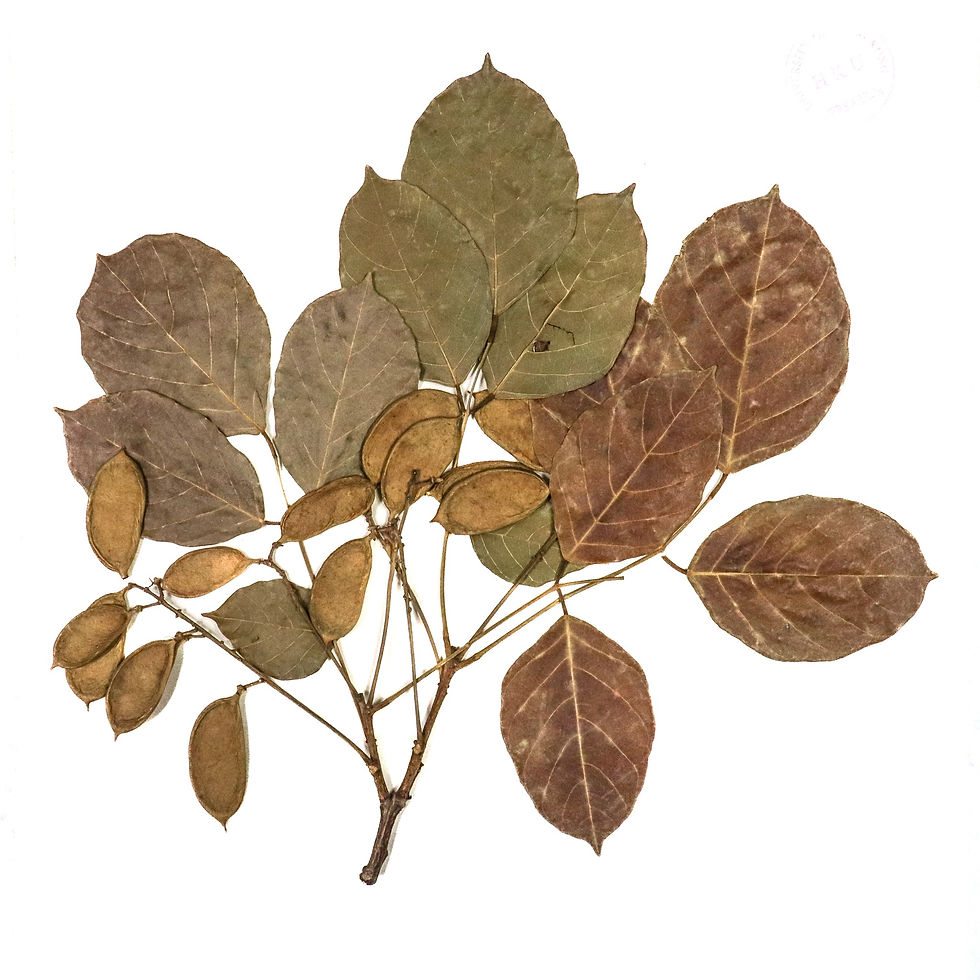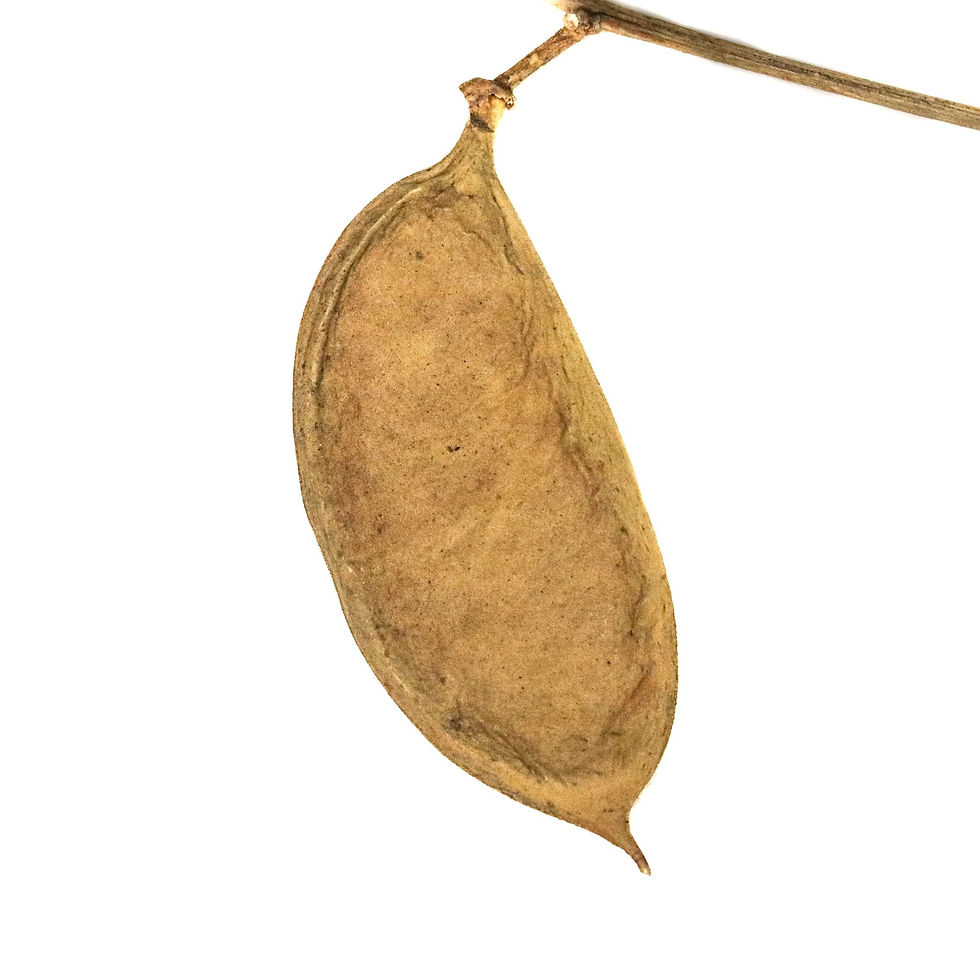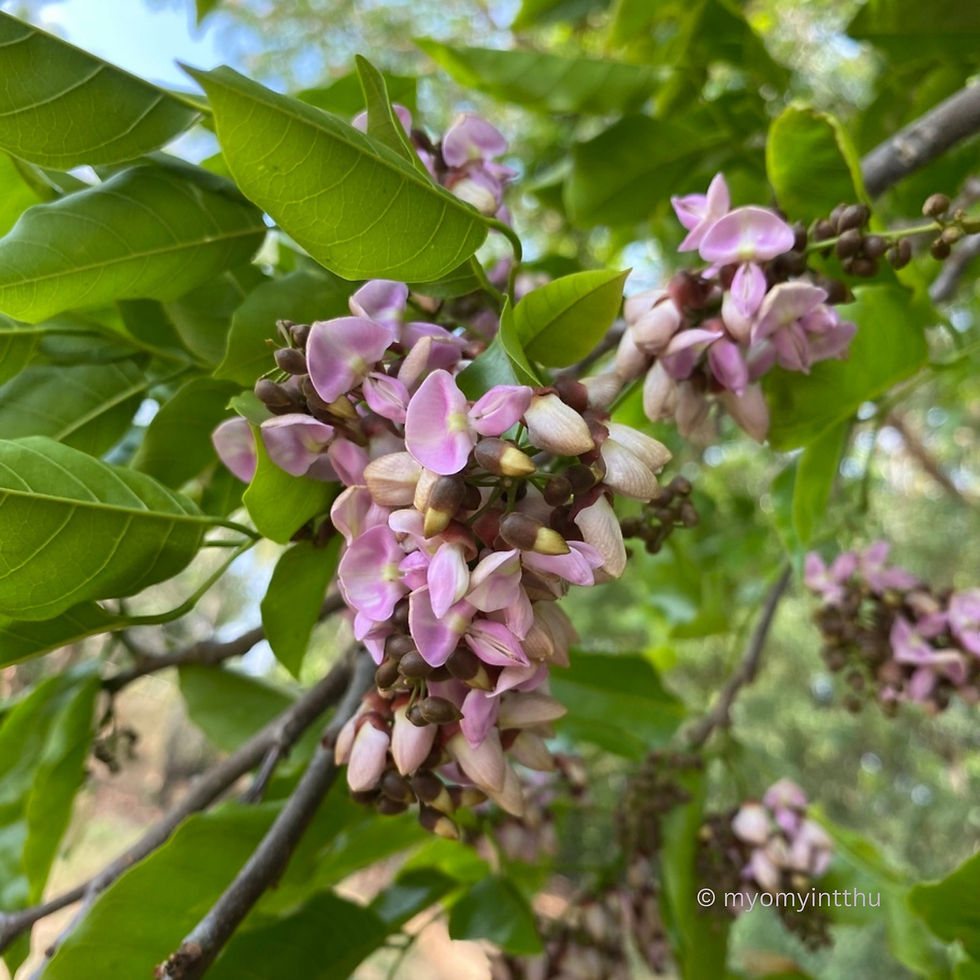If you see pods on the ground next to rivers and shorelines, it might have fallen off from the Wild Beans, 𝘗𝘰𝘯𝘨𝘢𝘮𝘪𝘢 𝘱𝘪𝘯𝘯𝘢𝘵𝘢 (L.) Pierre. This tree species is native to tropical South East Asia, Australia and Pacific Islands. Despite its ordinary appearance, it serves special ecological functions and also possesses unique physiological characteristics that enable it to adapt to a wide range of environments. Today, let us dive deeper into the interesting facts about the 𝘗. 𝘱𝘪𝘯𝘯𝘢𝘵𝘢.

𝘗. 𝘱𝘪𝘯𝘯𝘢𝘵𝘢 is the sole species within the 𝘗𝘰𝘯𝘨𝘢𝘮𝘪𝘢 genus . It belongs to the Fabaceae family, also known as the bean family. The ovary of the species from this family will develop into a legume, which is a simple dry fruit, more commonly known as “pods”. 𝘗. 𝘱𝘪𝘯𝘯𝘢𝘵𝘢 is native to humid subtropical areas. It is widespread along waterways or seashore, with its roots able to adapt to both freshwater and seawater. The flowering period of this species is from May to June. During this time, you will be able to observe flower clusters at the base of leaves. Their flowers are white to pink in colour and consist of five petals. A single, large upper petal known as the banner. Underneath the banner, there is a pair of lateral petals that resembles the “wings”, which encloses a pair of small keel petals inside them. This type of flower resembles the shape of a butterfly, which is a key characteristic of subfamily Papilionoideae in the Fabaceae family. The fruiting period of the pods spread from August to October, with those most conspicuous in trees of medium size (15 to 25 m in height).

Unlike its relatives from the Fabaceae family where pods will open naturally, pods of 𝘗. 𝘱𝘪𝘯𝘯𝘢𝘵𝘢 must first undergo degeneration. Interestingly, the seed dispersal mechanism of this species is more similar to that of some mangrove species. After the pods fall off from the mother tree, they are able to travel to new areas through waterflow. Once the pods reach suitable environmental conditions (e.g. right level of humidity, temperature and salinity), the pods will degenerate. During the process, the pods will be decomposed into soil by decomposing bacteria and the seeds will be exposed and germinate. This allows the seeds to germinate under optimal conditions which enhances their survival rate. This dispersal strategy has enabled the 𝘗. 𝘱𝘪𝘯𝘯𝘢𝘵𝘢 to proliferate across a wide range of habitats and regions.

𝘗. 𝘱𝘪𝘯𝘯𝘢𝘵𝘢 is very tolerant to high salinity and alkali conditions. The tree can be found in lowland forest areas on limestone, groups of rocky corals on the coast and along the edges of mangrove forest. Although it can grow under the shade of other trees, it is not a shade demander and grows well even under full sunlight.
This tree species is also well-known for a number of ecological services it provides. The lateral spread of roots of this species is about 9 m in 18 years, which is greater than most tree species. Its extensive network of lateral roots is effective in binding sand dunes and preventing soil erosion. The species holds a large number of flowers and pods, which shed regularly and provide rich nutrients to the soil and improve soil fertility. Due to its fast-growing characteristics, ability to tolerate different environmental conditions and capacity to improve soil condition, it is widely used as a pioneer plant for saline soil reclamation.
Apart from improving soil quality, the 𝘗. 𝘱𝘪𝘯𝘯𝘢𝘵𝘢 is also an exceptional engineer for maintaining nitrogen composition in soil. 𝘗. 𝘱𝘪𝘯𝘯𝘢𝘵𝘢 is a nitrogen fixing species, meaning that it has a symbiotic relationship with nitrogen-fixing bacteria that resides in its root nodules, known as nodulation in scientific terms. Nitrogen-fixing bacteria convert atmospheric nitrogen into a form that can be utilised by other plant species. The nitrogen will be released back to the soil as the plant grows. This process not only improves soil fertility, but also maintains a balanced nitrogen composition in the soil, which is crucial for maintaining a healthy ecosystem.

The 𝘗. 𝘱𝘪𝘯𝘯𝘢𝘵𝘢 is unique in that it possesses highly recognizable flowers and an interesting dispersal mechanism. Beyond this, its ability to adapt to a wide range of environments and modify its surrounding environment contributes to the overall ecological balance of the region, making it an exceptional “ecosystem engineer”. Want to know more about the captivating realm of natural marvels? Do come and visit the Hong Kong Biodiversity Museum. If you enjoyed this post, feel free to share it with your friends and follow us for more posts every week.
Text: Bonnie Leung

Comments